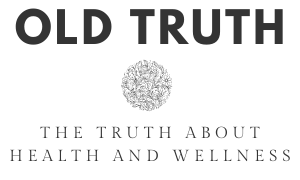We’ve all been spending a lot more time at home these days. Our household has become an office, a school, and a restaurant, and occasionally a home. That means it is more important than ever to keep a healthy environment, free of air pollution and indoor toxins that can be dangerous for you and your loved ones.
Here are five ways that you can reduce the risk of breathing in these dangerous contaminants, and make for a cleaner indoor environment in your household.
1. Reducing PM Exposure

One of the first steps to take to improve your indoor air quality is to reduce your exposure to indoor particulate matter. Particulate matter, or PM, is the solid and liquid particles that linger in the air. Many indoor pollutants fall into the PM category including smoke, pollen, and dust. The smaller these PM particles, the greater the health risk for people inhaling them, especially with chronic conditions like cardiovascular disease and asthma.
There’s a range of air quality products that help to reduce indoor exposure to these toxins. From whole-house filters to ventilation systems, a licensed HVAC technician can find solutions to your problems with fine particulate matter.
2. Improved Ventilation

How many times have you opened the windows after cooking to get the smoke and odors out? Well, open windows are actually one of the easiest ways to reduce your indoor PM levels. Through natural ventilation, homeowners can moderate the indoor air temperature while improving indoor air quality and reducing pollutants.
You can also combat the levels of indoor particulate matter through infiltration, a process by which outdoor air flows into the house through openings in the house. Getting outdoor air indoors is an easy way to reduce pollutant levels, with a cross-breeze that will have you feeling the ability to breathe easier almost instantly.
3. Using Air Cleaners

There are many types and sizes of air cleaners on the market that help to reduce ambient air pollution. Some air cleaners are highly effective at particle removal, helping to reduce long-term exposure to pollutants. This form of intervention can also be immediate depending on the size of the air cleaning unit, from large-scale to portable air cleaners.
Designed with replaceable air filters, cleaning the cleaners is paramount to make sure they properly function to create low levels of particulate matter. These air cleaners have been recommended for handling small particles of PM and helping people with medical conditions to better protect themselves from a higher risk of exacerbating symptoms connected to heart and lung disease.
4. Better Cleaning Habits

It may seem so simple, but the truth is having great cleaning habits in your household can be the frontline against higher concentrations of contaminants in your indoor air. Household cleaners can combat dangerous mold, but it is important to understand that their fumes can cause dizziness and shortness of breath in an enclosed space. Be sure to have plenty of cross-ventilation as you scrub, or wear a mask, to keep from inhaling these chemicals.
Indoor air pollution can have harmful effects on your respiratory system, and scientific evidence has shown that mold can do unmitigated damage to the lungs and bloodstream. Be sure to also look into air cleaners or dehumidifiers to combat moisture levels that create a breeding ground for dangerous spores.
5. The Power of Plants

If you are looking to achieve outdoor levels of air quality indoors, a houseplant can help. A NASA study (yes, that NASA) found that some plants, like spider plants, helped to remove 96 percent of the contaminants in a closed-off room over a 24-hour span. Indoor plants are capable of removing low levels of pollution from the air, while plant roots can actually remove them at higher concentrations.

